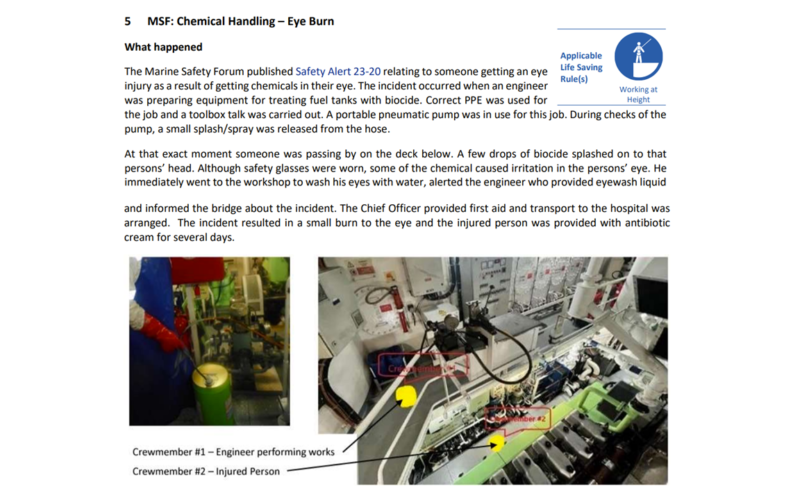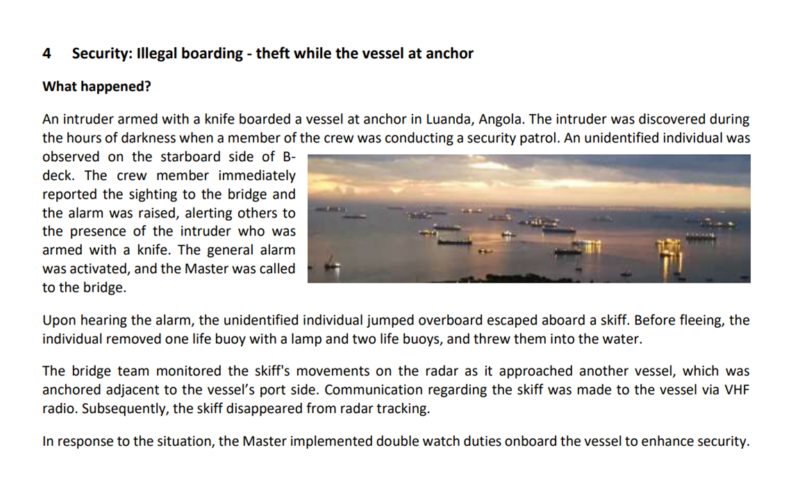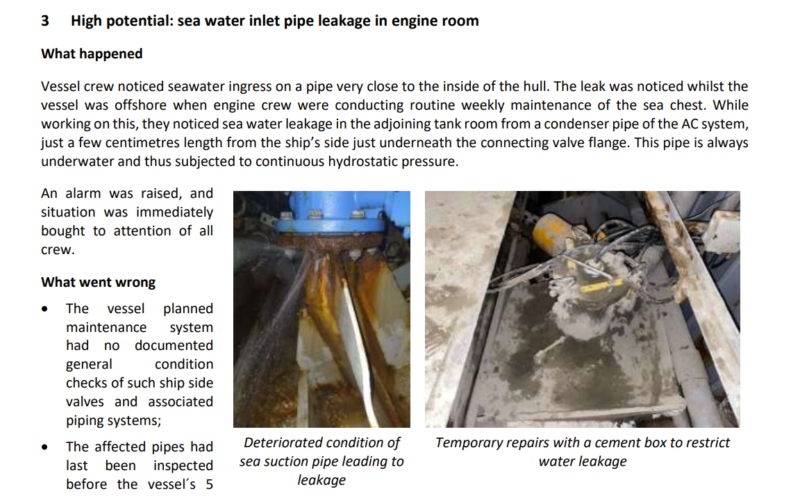Cause & Consequence
- Contact with something fixed or stationary
Contributing Factor
- Control of work
Description of Process
Finger injury sustained while using a Safe Hands Tool to manoeuvre container into place.
Description of Incident
Services team were working a vessel, load handling containers onto the skid deck using a safe hands tool (blind lift).
All personnel within the Services team were competent and experienced in conducting the task.
The container was landed onto the skid deck, to remove stored energy, as it was being manoeuvred into position against the back skid rail the container moved to the right.
The IP moved towards the side of the container and during this process the IP’s hand, which was placed at the back end of the safe hands tool, came into contact with a scaffold rack. IP’s finger was nipped between the scaffolding rack and the butt of the safe hands tool.
The IP’s resulting injury was the loss of the tip of one of his fingers.
Immediate Corrective Actions Taken:
Deck crew operations were suspended and the load made safe.
Time out for Safety held with the deck crew to review practices and the Risk Assessment.
What Caused it:
The load handlers focus and attention was on moving the container and not his immediate surrounding.
The gap between the container and the scaffolding rack was not identified as a hazard prior to commencement of task.
The load handlers hand was at the back of the safe hands tool and out of his view and focus.
Good Practice Guidance
The safe-hands tool should be held in both hands at the recommended points i.e. one hand on the forward grip and the other on the rear hand grip. A good stance should be adopted and the operator should insure the safe-hands tool is being held in a manner that will not cause personal injury should circumstances change. Do not stand directly behind the tool or use your torso to impart leverage during operations.
- Task specific risk assessment to be carried out prior to conducting moving operations within the deck space
- Communications between the teams to be consistent throughout the tasks being conducted - “look out for each other”
- Avoid assumptions; take the time to think of the impact of decisions and changes
- Take time to plan the work as a team, challenging complacency and checking routine work
- Ensure that procedures are adequate, accessible, up-to-date and clearly communicated
Other Useful Resources
Lifting and Mechanical Handling Guidelines https://www.stepchangeinsafety.net/safety-resources/publications/lifting-mechanical-handling-guidelines
Manual handling workplace checklist https://www.stepchangeinsafety.net/safety-resources/publications/manual-handling-workplace-checklist
Step Change safety alert: Crush injury leading to loss of tip of thumb https://www.stepchangeinsafety.net/safer-conversations/safety-alerts/crush-injury-leading-loss-tip-thumb
Step Change Lifting Forum – contact info@stepchangeinsafety.net for information
Rate this alert
Average Rating
Latest Alerts & Moments
Our searchable catalogue of hundreds of Safety Alerts and Safety Moments are all designed as learning resources that can help improve workplace safety.


